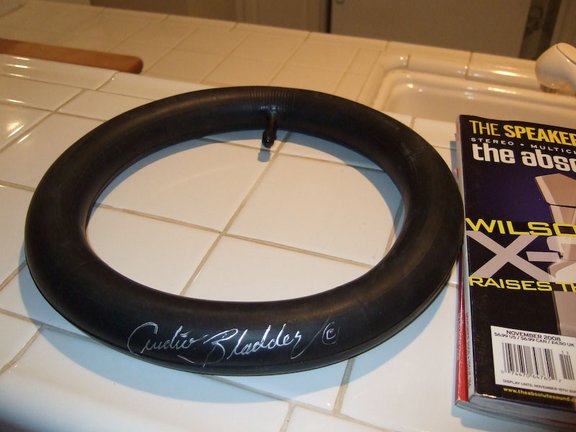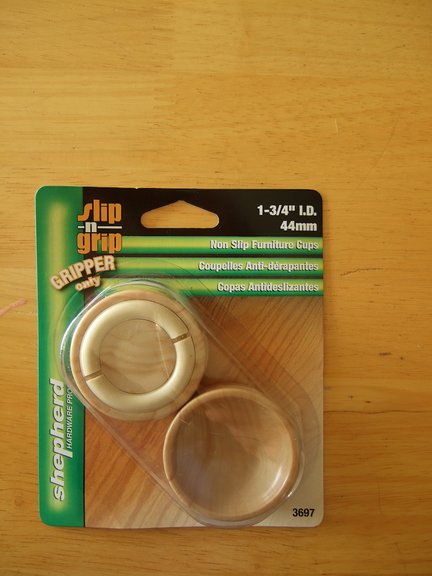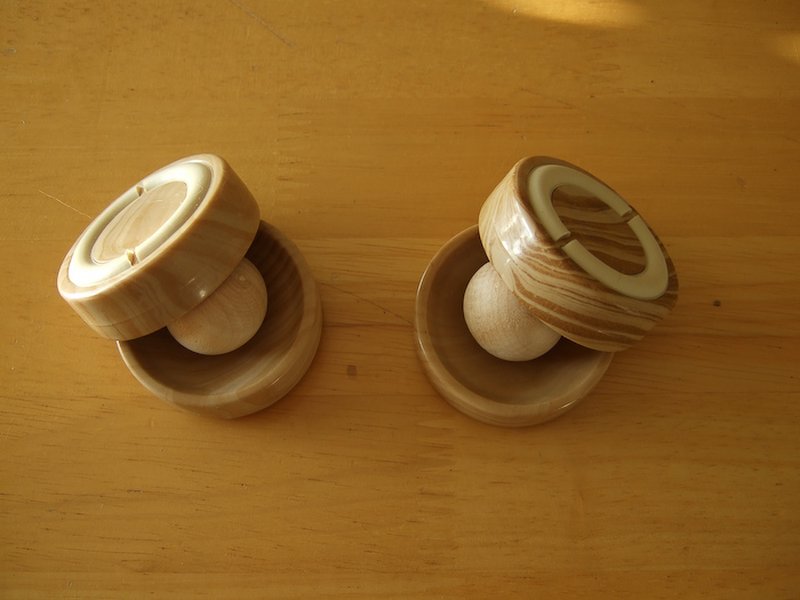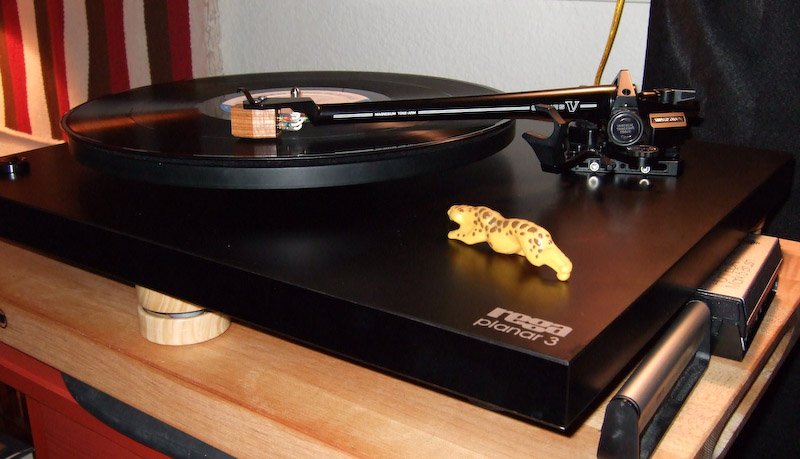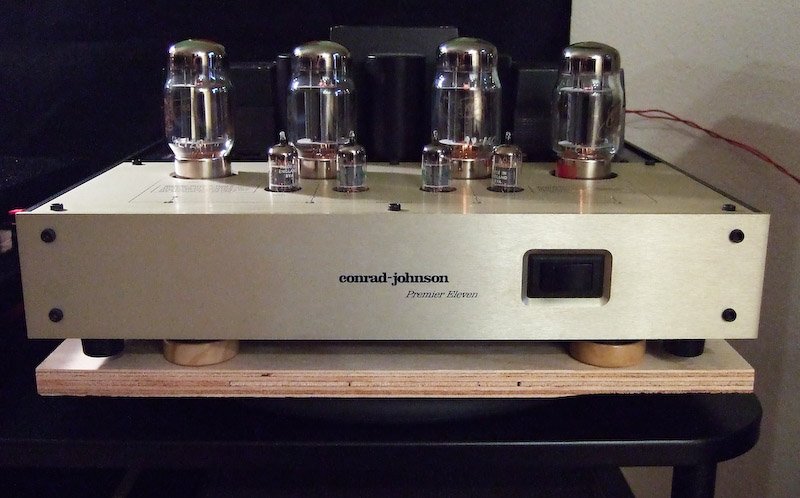This has been discussed ad nauseum in the Steve Hoffman hardware forum.
High mass boards, blocks, cement or marble blocks, sand boxes are NOT, I repeat, NOT the way to go for turntable isolation. You're just raising the amount of resonating mass that needs isolation. All the folks who specialize in professional isolation products agree with this. A light rigid board resting on an inner tube is a MUCH better bet, or a shelf that is of the floor.
Try this: get 3/4" or 1" plywood board cut from scrap to be slightly larger than your TT.
Set this board on an 12" or 16" inner tube inflated just enough to support the board and your TT, off the shelf, this will be around 10 PSI. Put a straw under the inner tube so that it does not seal against the board from vacuum and cause a mid-bass hump.
On top of the plywood board, place a 25mm or 1" marble or ball bearing into a concave plastic furniture cup.
This is shown with wooden balls, but marbles or steel ball bearings are much better. You can use one or two cups per ball depending on what is required to raise the stock TT feet off the shelf.
Use three of these under your turntable so that there is no possibilty of rocking or wobble (you can't rock a tripod). These will act as "roller blocks" and isolate your TT from seismic rotational and horizontal resonances.
The inner tube under the board acts as a low pass filter for vertical seismic resonances in the 3-15 Hz range. Using both together will provide a marked improvement in the sound from your TT in all regards: air, open-ness, transparency, imaging, detail, etc.
Here you can see the inner tube under a 1" maple board and the homemade roller blocks under my Rega.
You should also put this setup under your amp, preamp, integrated for even more improvements. The improvements this will make in your system is NOT subtle.
Here is a shot showing this setup under my Conrad-Johnson Premier 11A power amp.
Search in the Steve Hoffman audio hardware forum for "inner tube", "Barry Diament" for many, many examples and much discussion of this technique.



 :scratch2:
:scratch2:
